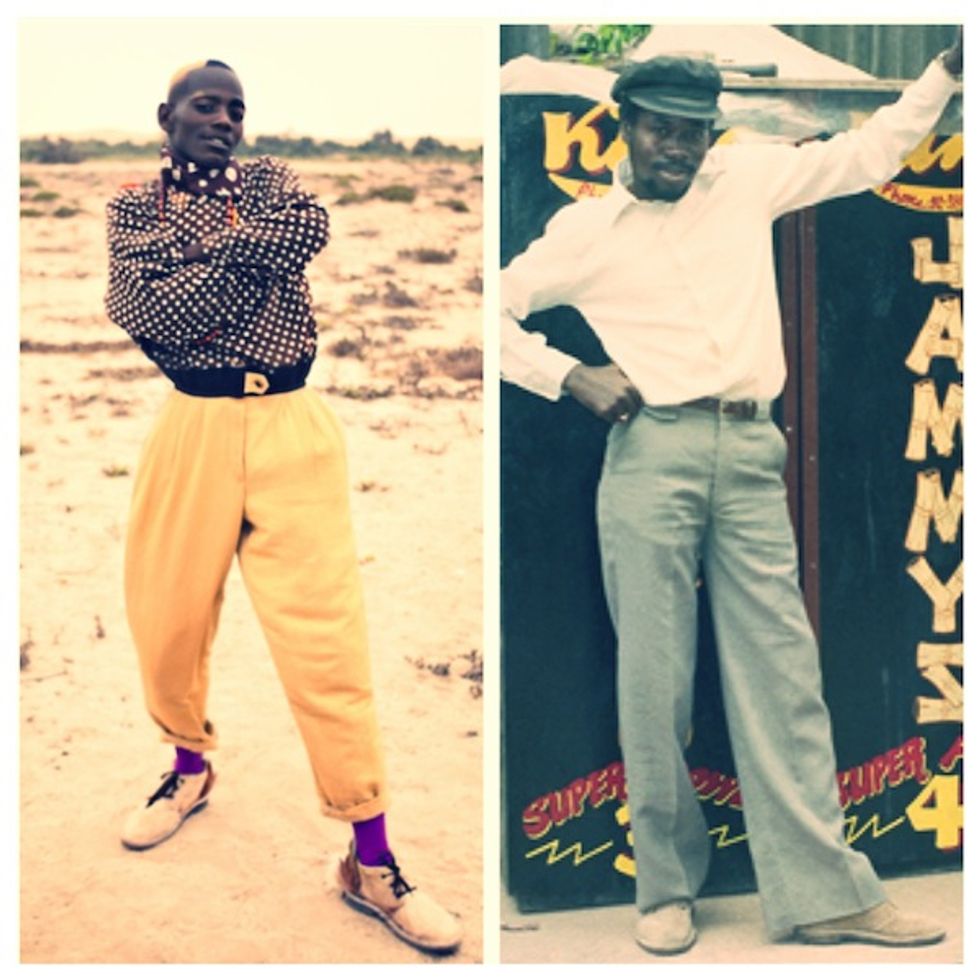A Deep Dive into Jamaican traditional Footwear
Jamaican culture is a vibrant tapestry woven from African, European, and indigenous influences. This rich cultural heritage is beautifully reflected in the island’s traditional footwear, which showcases a unique blend of practicality, style, and cultural significance.
Before European colonization, indigenous Taino people inhabited Jamaica. Their footwear likely consisted of simple sandals made from natural materials like leaves, bark, and animal hides. These early forms of footwear served a functional purpose, providing protection for the feet while navigating the island’s diverse terrain.

The arrival of Europeans brought new footwear styles and materials. Spanish colonizers introduced leather shoes, which became more prevalent among the elite. However, for the majority of the population, practical and affordable footwear remained essential.
Rope Sandals: A Symbol of Resilience
One of the most iconic and enduring forms of Jamaican footwear is the rope sandal. These simple yet sturdy sandals are typically handmade from discarded rope or twine.
Crafting Tradition
The art of crafting rope sandals has been passed down through generations, with many families possessing their own unique techniques. The process involves carefully selecting and preparing the rope, weaving it into intricate patterns, and then attaching it to a sole, often made from recycled tires or salvaged wood.
Versatility and Durability

Rope sandals are remarkably versatile and durable. They are ideal for the island’s tropical climate, offering excellent ventilation and protection from the hot ground. Their affordability and ease of repair make them an accessible option for people from all walks of life.
Cultural Significance
Beyond their practical value, rope sandals hold significant cultural meaning in Jamaica. They symbolize resilience, resourcefulness, and the ability to create something valuable from seemingly discarded materials. These sandals are often worn by Rastafarians and other members of the Rastafari movement as a symbol of their connection to the earth and their rejection of materialism.
Fisherman’s Slippers: A Legacy of Coastal Communities
Another notable type of traditional Jamaican footwear is the fisherman’s slipper. As the name suggests, these slippers were originally worn by fishermen and other coastal workers.
Construction and Design
Fisherman’s slippers are typically made from recycled tires, which are cut and shaped to fit the foot. They often feature a simple strap or band to secure them to the foot.
Functionality and Comfort
These slippers provide excellent protection for the feet from sharp rocks, thorns, and other hazards encountered in coastal environments. They are also highly durable and can withstand the harsh conditions of the sea and shoreline.
Modern Interpretations
In recent years, fisherman’s slippers have experienced a resurgence in popularity, with many artisans and designers creating contemporary versions that incorporate modern materials and aesthetics. These updated designs have brought new life to this traditional footwear, while still honoring its roots.
While traditional footwear continues to be an important part of Jamaican culture, the island has also been influenced by international fashion trends.
The Rise of Clarks Wallabees
In the mid-20th century, Clarks Wallabees, a British desert boot style, gained immense popularity in Jamaica. These shoes became a symbol of style and status, particularly among reggae musicians and youth culture.
Reggae and the Global Stage
The global rise of reggae music in the 1970s further amplified the visibility of Clarks Wallabees and other international footwear styles. Jamaican musicians, such as Bob Marley and Jimmy Cliff, often sported these shoes on stage and in music videos, introducing them to a worldwide audience.
A Fusion of Styles
Today, Jamaican footwear reflects a fusion of traditional and international influences. While rope sandals and fisherman’s slippers continue to be worn, they coexist alongside contemporary sneakers, sandals, and other fashionable footwear.
The future of Jamaican footwear looks bright. A growing interest in sustainable and ethical fashion has led to a renewed appreciation for handmade and locally produced footwear.
Supporting Local Artisans
Many organizations and initiatives are working to support local artisans and preserve traditional footwear-making techniques. These efforts aim to ensure that these valuable skills are passed down to future generations and that Jamaican footwear continues to thrive.
Embracing Innovation
At the same time, there is a growing movement towards innovative and contemporary designs that incorporate traditional elements. This approach allows Jamaican footwear to remain relevant and appealing to a modern audience while honoring its rich cultural heritage.
Jamaican traditional footwear is a testament to the island’s creativity, resilience, and cultural diversity. From the humble rope sandal to the iconic Clarks Wallabee, these shoes tell a fascinating story of the island’s history, its people, and its place in the global cultural landscape. As Jamaica continues to evolve, its footwear will undoubtedly continue to reflect the dynamic interplay between tradition and modernity, offering a glimpse into the soul of this vibrant nation.



